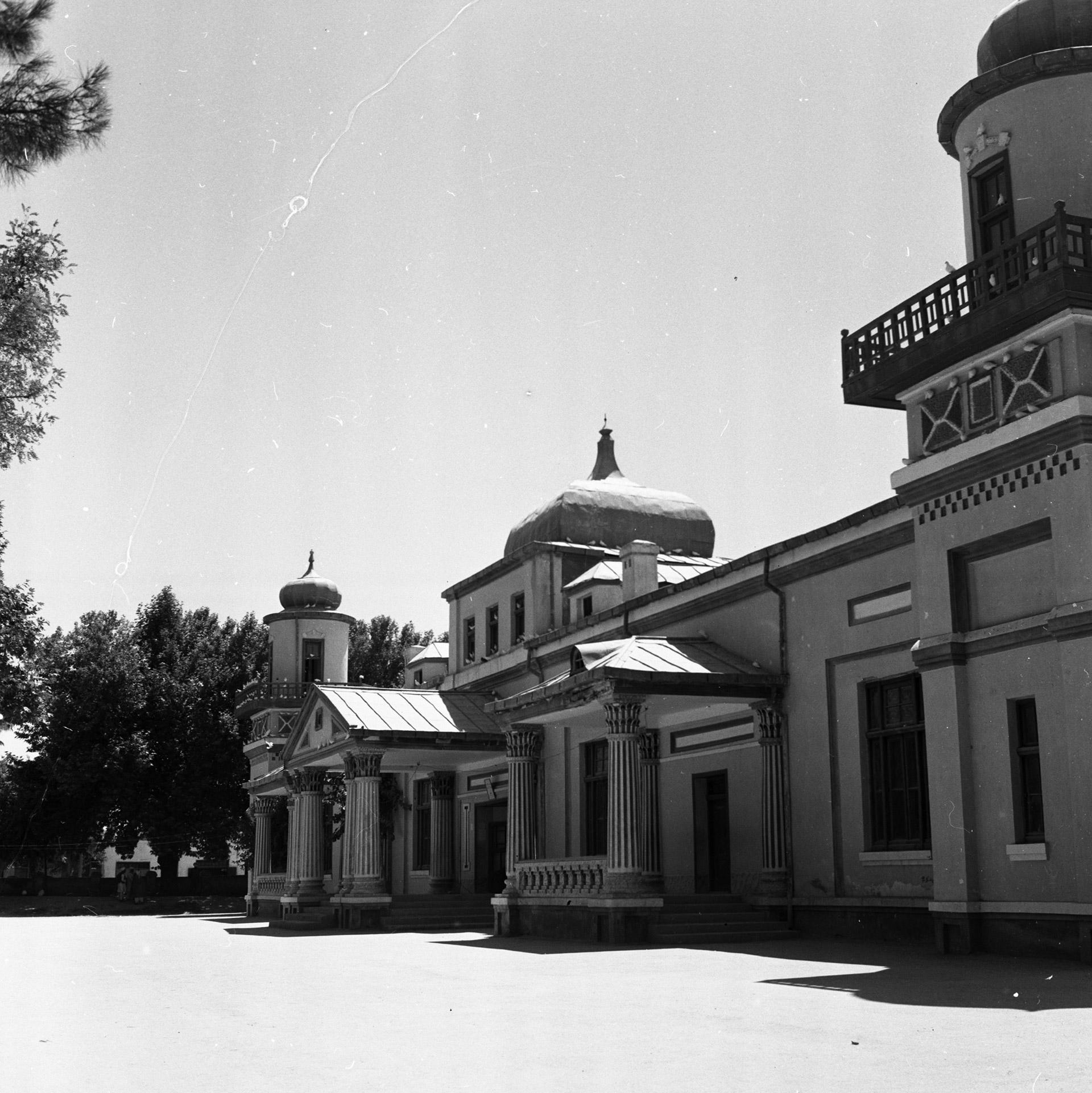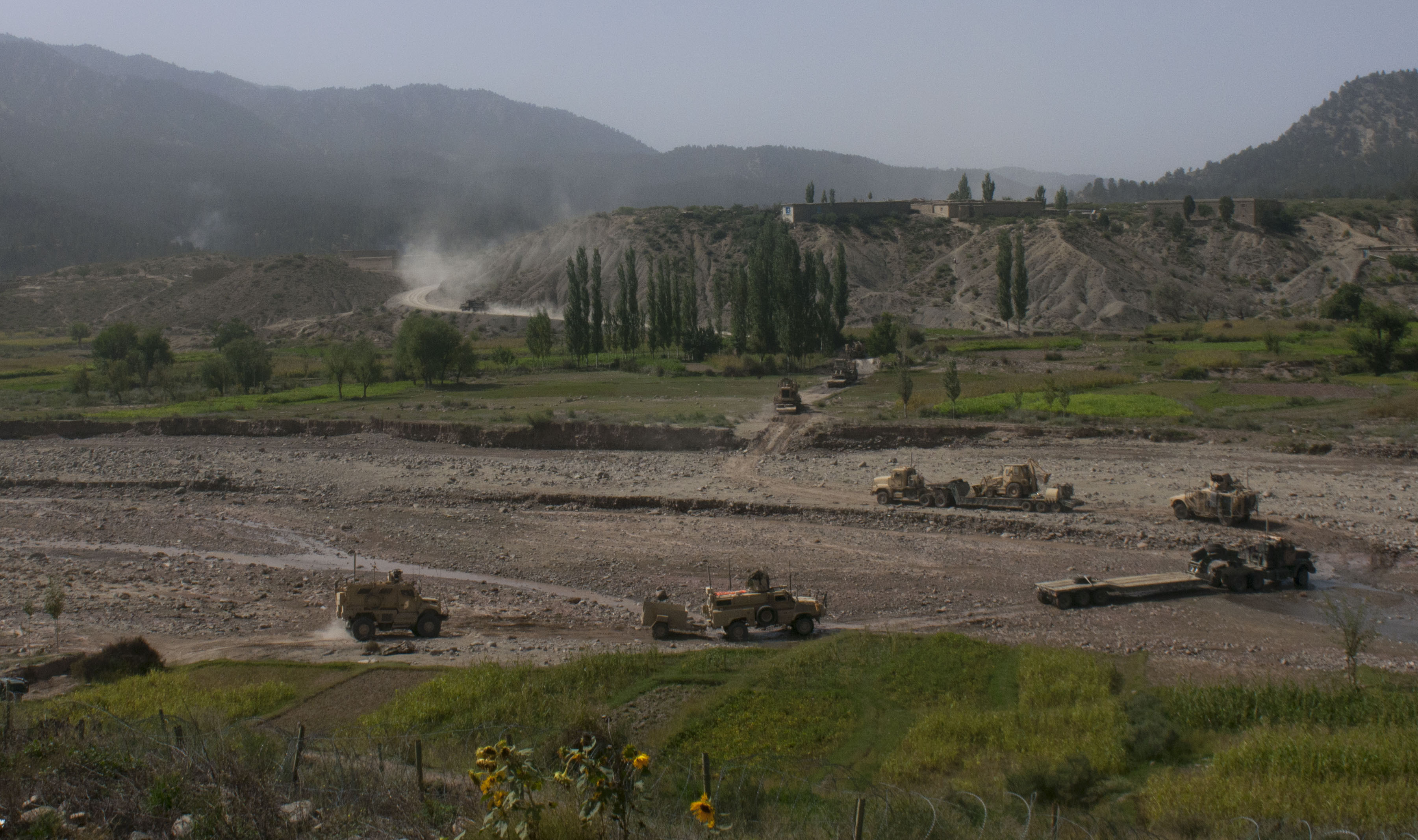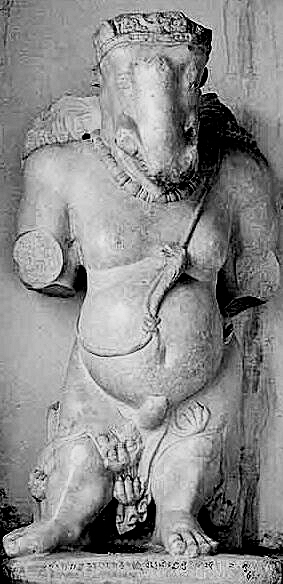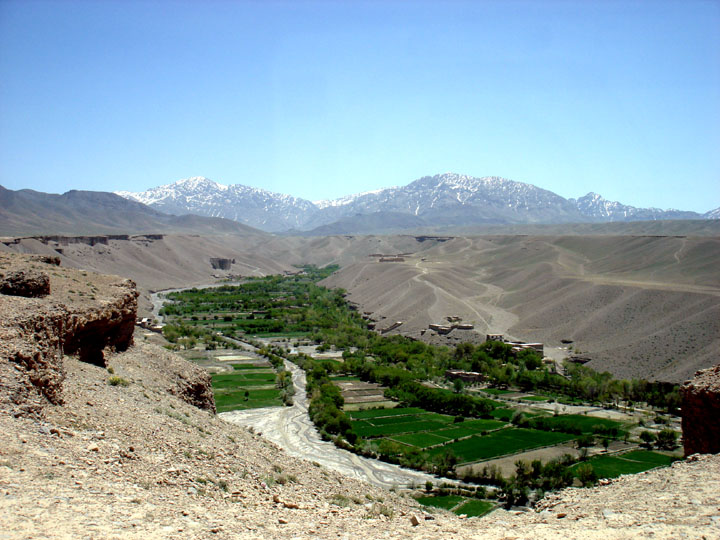|
Junbish-i Milli
The National Islamic Movement of Afghanistan ( prs, جنبش ملی اسلامی افغانستان, ''Junbish-i-Milli Islami Afghanistan''), sometimes called simply Junbish, is a Turkic political party in Afghanistan. Its founder is Marshal Abdul Rashid Dostum who created it in 1992 made from his loyalist remnants from the People's Democratic Party of Afghanistan's communist regime. It has been described as "an organisation heavily peopled with former Communists and Islamists," and is regarded as somewhat secular and left-leaning. Its voter base is mostly Uzbeks, and it is strongest in Jowzjan, Balkh, Faryab, Sar-e Pol, and Samangan provinces. History Formation Junbish and its military wing, Division 53 started as a “self-defense unit” for the Sheberghan oil fields in northern Afghanistan, growing to a platoon and then a company until it grew to a division of about 40,000 men by 1989. This division joined the Afghan government and was referred to as Division 53. In 198 ... [...More Info...] [...Related Items...] OR: [Wikipedia] [Google] [Baidu] |
Abdul Rashid Dostum
Abdul Rashid Dostum ( ; prs, عبدالرشید دوستم; Uzbek Latin: , Uzbek Cyrillic: , ; born 25 March 1954) is an Afghan exiled politician, former Marshal in the Afghan National Army, founder and leader of the political party Junbish-e Milli. Dostum was a major army commander in the communist government during the Soviet–Afghan War, and in 2001 was the key indigenous ally to US Special Forces and the CIA during the campaign to topple the Taliban government. He is one of the most powerful and notorious warlords since the beginning of the Afghan wars, known for siding with winners during different wars. Born into an ethnic Uzbek peasant family in Jawzjan Province, Dostum joined the People's Democratic Party of Afghanistan (PDPA) as a teenager before enlisting in the Afghan National Army and training as a paratrooper, serving in his native region around Sheberghan. Soon with the start of the Soviet–Afghan War, Dostum commanded a KHAD militia and eventually gained a r ... [...More Info...] [...Related Items...] OR: [Wikipedia] [Google] [Baidu] |
Sheberghan
Sheberghān or Shaburghān ( Uzbek, Pashto, fa, شبرغان), also spelled ''Shebirghan'' and ''Shibarghan'', is the capital city of the Jowzjan Province in northern Afghanistan. The city of Sheberghan has a population of 175,599. It has four districts and a total land area of 7,335 hectares. The total number of dwellings in Sheberghān is 19,511. In 2021, the Taliban gained control of the city during the 2021 Taliban offensive. Location Sheberghān is located along the Sari Pul River banks, about west of Mazar-i-Sharif on the national primary ring road that connects Kabul, Puli Khumri, Mazar-i-Sharif, Sheberghān, Maymana, Herat, Kandahar, Ghazni, and Maidan Shar. Sheberghān airport is situated between Sheberghān and Aqcha. Etymology The city's name is a corruption of its classical Persian name, Shaporgân, meaning "ingShapur's town". Shapur was the name of two Sasanian kings, both of whom built a great number of cities. However, Shapur I was the governor of the east ... [...More Info...] [...Related Items...] OR: [Wikipedia] [Google] [Baidu] |
Sar-e Pul Province
Sar-e Pol, also spelled Sari Pul (Dari/Pashto: ), is one of the thirty-four provinces of Afghanistan, located in the north of the country. It borders Ghor and Bamyan to the south, Samangan to the east, Balkh and Jowzjan to the north, and Faryab to the west. The province is divided into 7 districts and contains 896 villages. It has a population of about 632,000, which is multi-ethnic and mostly a tribal society. The province was created in 1988, with the support of northern Afghan politician Sayed Nasim Mihanparast. The city of Sar-e Pol serves as the provincial capital. In 2021, the Taliban gained control of the province during the 2021 Taliban offensive. History Between the early 16th century and the mid-18th century, the territory was ruled by the Khanate of Bukhara. It was given to Ahmad Shah Durrani by Murad Beg of Bukhara after a treaty was signed in or about 1750, and became part of the Durrani Empire. It was ruled by the Durranis followed by the Barakzai dynasty. The a ... [...More Info...] [...Related Items...] OR: [Wikipedia] [Google] [Baidu] |
Ghaffar Pahlawan
Ghafir ( ar, غافر, ; "The All-Forgiving", referring to God), also known as Al-Muʼmin ( ar, المؤمن, link=no, ; The Believer), is the 40th chapter (sūrah) of the Qur'an, with 85 verses ( āyāt). It takes its name from verse 28, which mentions a distinguished believer from among the clan of the Pharaoh who supported Moses, referring to him as a "believing man," hence ''al-Mu'min;'' The Believer. However, this surah is most often called ''al-Ghafir'' (the All-Forgiving) because of the Divine Name mentioned in verse 3. Regarding the timing and contextual background of the believed revelation (''asbāb al-nuzūl''), it is a "Meccan surah", which means it is believed to have been revealed in Mecca, rather than later in Medina. Summary *1-3 The Quran a revelation from the only true God *4 It is denied by none but unbelievers *4-6 Confederated infidels, however prosperous, are doomed *7-9 The angels intercede for true believers *10-12 Infidels shall repent in h ... [...More Info...] [...Related Items...] OR: [Wikipedia] [Google] [Baidu] |
Rasul Pahlawan
General Rasul Pahlawan was an Uzbek military leader in Afghanistan, and the brother of Uzbek leader Abdul Malik Pahlawan. Rasul Pahlawan was born in Faryab Province in northern parts of Afghanistan. In June 1996, he was killed in an ambush in Mazar-i-Sharif , official_name = , settlement_type = City , image_skyline = , pushpin_map = Afghanistan#Bactria#West Asia , pushpin_label = Mazar-i-Sharif , pushpin .... References Afghan Uzbek politicians History of Faryab Province 1996 deaths People murdered in Afghanistan Mazar-i-Sharif People from Faryab Province 1950 births {{Afghanistan-bio-stub ... [...More Info...] [...Related Items...] OR: [Wikipedia] [Google] [Baidu] |
Mujaheddin
''Mujahideen'', or ''Mujahidin'' ( ar, مُجَاهِدِين, mujāhidīn), is the plural form of ''mujahid'' ( ar, مجاهد, mujāhid, strugglers or strivers or justice, right conduct, Godly rule, etc. doers of jihād), an Arabic term that broadly refers to people who engage in ''jihad'' (), interpreted in a jurisprudence of Islam as the fight on behalf of God, religion or the community (''ummah''). The widespread use of the word in English began with reference to the guerrilla-type militant groups led by the Islamist Afghan fighters in the Soviet–Afghan War (see Afghan mujahideen). The term now extends to other jihadist groups in various countries such as Myanmar (Burma), Cyprus, and the Philippines. Early history In its roots, the Arabic word ''mujahideen'' refers to any person performing ''jihad''. In its post-classical meaning, ''jihad'' refers to an act that is spiritually comparable in reward to promoting Islam during the early 600s CE. These acts could be as ... [...More Info...] [...Related Items...] OR: [Wikipedia] [Google] [Baidu] |
Kabul
Kabul (; ps, , ; , ) is the capital and largest city of Afghanistan. Located in the eastern half of the country, it is also a municipality, forming part of the Kabul Province; it is administratively divided into 22 municipal districts. According to late 2022 estimates, the population of Kabul was 13.5 million people. In contemporary times, the city has served as Afghanistan's political, cultural, and economical centre, and rapid urbanisation has made Kabul the 75th-largest city in the world and the country's primate city. The modern-day city of Kabul is located high up in a narrow valley between the Hindu Kush, and is bounded by the Kabul River. At an elevation of , it is one of the highest capital cities in the world. Kabul is said to be over 3,500 years old, mentioned since at least the time of the Achaemenid Persian Empire. Located at a crossroads in Asia—roughly halfway between Istanbul, Turkey, in the west and Hanoi, Vietnam, in the east—it is situated in a stra ... [...More Info...] [...Related Items...] OR: [Wikipedia] [Google] [Baidu] |
Paktika Province
Paktika (Pashto/Dari: ) is one of the 34 provinces of Afghanistan, located in the eastern part of the country. Forming part of the larger Loya Paktia region, Paktika has a population of about 789,000, mostly ethnic Pashtuns. The town of Sharana serves as the provincial capital, while the most populous city is Urgun. In 2021, the Taliban gained control of the province during the 2021 Taliban offensive. Geography Paktika sits adjacent to the Durand Line border between Pakistan and Afghanistan. It is bordered by the Khost and Paktia provinces to the north. The western border is shared with the provinces of Ghazni and Zabul. The South Waziristan and North Waziristan agencies are to the east of Paktika, while Zhob District of the Balochistan province of Pakistan borders it the southeast. The Shinkay Hills run through the center of Paktika; Toba Kakar Range runs along the border with Pakistan. The Southern districts are intermittently irrigated and cultivated, the center and north ... [...More Info...] [...Related Items...] OR: [Wikipedia] [Google] [Baidu] |
Gardez
, settlement_type =City , image_skyline =gardez_paktya.jpg , imagesize = , image_caption =The Bala Hesar fortress in the center of Gardez City , image_flag = , flag_size = , image_seal = , seal_size = , image_shield = , shield_size = , image_blank_emblem = , blank_emblem_type = , blank_emblem_size = , image_map = , mapsize = , map_caption = , pushpin_map = Afghanistan , pushpin_relief = yes , pushpin_label_position = above , pushpin_mapsize = , pushpin_map_caption = Location in Afghanistan , subdivision_type = Country , subdivision_name = Afghanistan , subdivision_type1 = Province , subdivision_name1 = Paktia Province , subdivision_type2 = District , subdivision_name2 = Gardez District , government_footnotes = , government_type = , leader_title ... [...More Info...] [...Related Items...] OR: [Wikipedia] [Google] [Baidu] |
Ghazni Province
Ghazni (Dari: ) is one of the 34 provinces of Afghanistan, located in southeastern Afghanistan. The province contains 19 districts, encompassing over a thousand villages and roughly 1.3 million people, making it the 5th most populous province. The city of Ghazni serves as the capital. It lies on the important Kabul–Kandahar Highway, and has historically functioned as an important trade center. The Ghazni Airport is located next to the city of Ghazni and provides limited domestic flights to Afghanistan's capital, Kabul. Ghazni borders the provinces of Maidan Wardak, Logar, Paktia, Paktika, Zabul, Uruzgan, Daykundi and Bamyan. Etymology The province was known as Ghazna in the 10th century, during and after the Ghaznavid era. History Ghazni was a thriving Buddhist center before and during the 7th century AD. Excavations have revealed religious artifacts of both Hindu and Buddhist traditions. In 644 AD, the Chinese pilgrim Xuanzang visited the city of Jaguda (probably G ... [...More Info...] [...Related Items...] OR: [Wikipedia] [Google] [Baidu] |
Logar Province
Logar (Pashto/Dari: ; meaning Greater Mountain ( لوې غر)) is one of the 34 provinces of Afghanistan located in the eastern section of the country. It is divided into 7 districts and contains hundreds of villages. Puli Alam is the capital of the province. As of 2021, Logar has a population of approximately 442,037. It is a multi-ethnic tribal society, while about 65% of its residents are made up by Pashtuns whereas the remainder are Tajiks and Hazaras. The Logar River enters the province through the west and leaves to the north. History Pre Islamic era A 2,600-year-old a Zoroastrian fire temple was found at Mes Aynak (about 25 miles or 40 kilometers southeast of Kabul). Several Buddhist stupas and more than 1,000 statues were also found. Smelting workshops, miners’ quarters (even then the site's copper was well known), a mint, two small forts, a citadel, and a stockpile of Kushan, Sassanian and Indo-Parthian coins were also found at the site. Recent history ... [...More Info...] [...Related Items...] OR: [Wikipedia] [Google] [Baidu] |
Khost Province
Khost (Pashto/Dari: ) is one of the 34 provinces of Afghanistan, located in the southeastern part of the country. Khost consists of thirteen districts and the city of Khost serves as the capital of the province. To the east, Khost Province is bordered by North Waziristan and Kurram, which are districts in Pakistan’s Khyber Pakhtunkhwa province. Historically, Khost used to be a part of Paktia, and the larger region surrounding Khost is still referred to as Loya Paktia. Throughout history, the province has been the site of numerous rebellions, leading to the local Pashtun populace to consider themselves the “traditional king-makers in Kabul”. The province was previously known as the Southern Province, and was united with neighbouring Paktia. Khost is also home to numerous Universities, including Shaikh Zayed University, which is the only University in Afghanistan with a faculty in computer science. As of 2021, it was estimated that the population of the province stood at ... [...More Info...] [...Related Items...] OR: [Wikipedia] [Google] [Baidu] |







